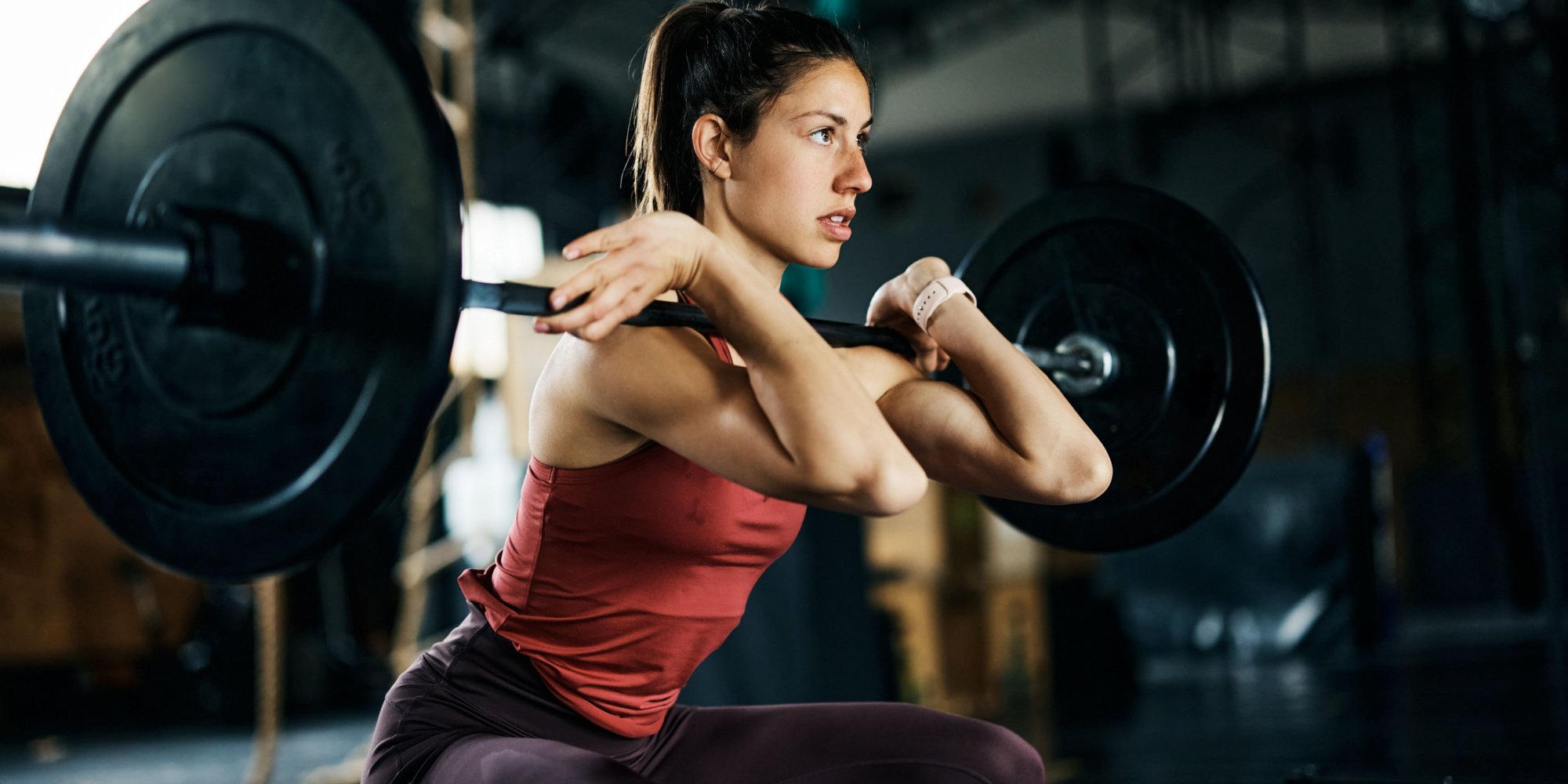What Are the Best Exercises to Build Overall Strength?
Jan 23, 2023 mindpumpSo you want to get stronger. Me too! The winter months tend to be the perfect time to pack on muscle and improve strength, and most of the time, the simplest exercises tend to be the most effective.
Here, I’ll talk about 5 exercises you should be incorporating into your routine, why they are the best for improving overall strength, and variations to keep you busy for months to come. The variations discussed are limited to free weights like dumbbells and barbells. Machines build strength as well, but the use of free weights requires stability and near total-body activation that’s not as stressed when using machines.
But First…
Do you want to build size? Or strength? If hypertrophy is your focus, then that means you want an increase in muscular size and improve definition. But if you want to get stronger and improve strength, then you want to focus on increasing force production and the ability to lift heavier weights. These two goals require different types of training.
-Hypertrophy is accomplished by increasing the volume of weight lifted over time. Moderate loading is key here, and you can expect to be in the 8-12 rep range with 5 to 6 sets completed per week for the muscle group you want to define.
-Strength training is accomplished by increasing the resistance, where you are completing fewer reps at around 85% of your one rep max.
If you want to build overall strength, make sure you are pushing yourself. If you can get to 8 reps of the exercise with little difficulty, then you are probably not lifting heavy enough. Four to 8 reps is a healthy range, but you must also account for longer rest periods (between sets and workouts) to ensure proper recovery and muscle protein synthesis.
Squats
The squat is as functional as it gets. If you can master the squat, you’ll be on the right path to moving well and executing more complex movements. With squats, you’re activating large muscle groups like the quadriceps and hamstrings. The quadriceps extend the knee, while the hamstrings flex the knee. Meanwhile, your hips are flexing and extending, thanks to your iliopsoas during hip flexion and gluteus maximus and hamstrings during extension. Not only that, the gastrocnemius (one of the muscles in the calf) plays a role in flexing the knee as well. Altogether, your entire lower body is required to efficiently carry out a proper squat, which means that with the right stimulus, you’re hitting and maximizing many muscle groups.
Variations:
Barbell squat; Dumbbell squat; Goblet squat; Sissy squat; Split stance squat; Spanish squat; Front-loaded squats; Staggered stance squat; Landmine squat; Zercher squat; Resistance band squat.
Deadlifts
The hip hinge that is needed to execute a proper deadlift improves muscle strength and performance, while reducing injury. Deadlifts are a popular exercise to target the glutes and hamstrings, as these muscles produce the hip hinge movement when you flex and extend the hips. The gluteus maximus is the largest muscle in the human body; training the glutes will increase strength and power, while also helping to maintain proper posture. Though it’s not the first thing we think of when deadlifting, the back and core muscles also get some strength benefits as well; these muscles are required to stabilize the torso as you lower and lift the weight.
Variations:
Conventional barbell deadlift; Romanian barbell deadlift (RDL); Kettle deadlift (conventional and RDL); Dumbbell deadlift (conventional and RDL); Single Leg deadlift; Landmine deadlift; Trap bar deadlift; Sumo deadlift.
Rows
Rows are an effective exercise to target the back, which includes the latissimus dorsi, rhomboids, trapezius, and the biceps. Rows produce a pulling motion, where you are pulling the weight toward you while targeting your posterior chain, or the backside of your body. Most row exercises require spinal stability and optimal movement in the scapula. The latissimus dorsi directly attaches to the spine, so rows to strengthen the back can help promote spinal strength and stability as well.
Variations:
Barbell row; Dumbbell row; Neutral and pronated grip row; Landmine row; Single arm row; Cable row; Gorilla row; Inverted row; Chest-supported row.
Chest Press
Chest press movements improve strength in the pectoralis major and minor, serratus anterior, triceps, and anterior deltoids. Opposite of rows, a chest press produces a pushing motion where you are pressing the weight away from you. Working on strengthening these muscles can be applied to everyday activities where pushing is required, like moving furniture, a heavy door, or even pushing yourself up from off the floor. Balancing chest and back exercises is key to prevent muscle balances and overcompensation of other muscles, so try not to emphasize one muscle group over the other.
Variations:
Barbell chest press; Dumbbell chest press; Single arm chest press; Alternating dumbbell chest press; Kettlebell chest press; Neutral grip chest press; Cable chest press; Incline and decline chest press.
Overhead Press
Last but not least, the overhead press targets the deltoid muscles as you abduct the shoulder joint, or move your arm away from your body. Though it is not a large muscle area, it is still important to complete shoulder exercises to promote rotator cuff health and assist larger muscles during more complex lifts. There are three parts to the deltoid muscle: the anterior, lateral, and posterior heads. During the overhead press, the lateral head is emphasized, but the anterior head could be activated depending on the grip position during the movement.
Variations:
Barbell overhead press; dumbbell overhead press; Single arm overhead press; Kettlebell overhead press; Arnold press; Push press; Z Press. By practicing all of these movements, you achieve a total body workout that can enhance overall strength, power, and muscle activation
.







